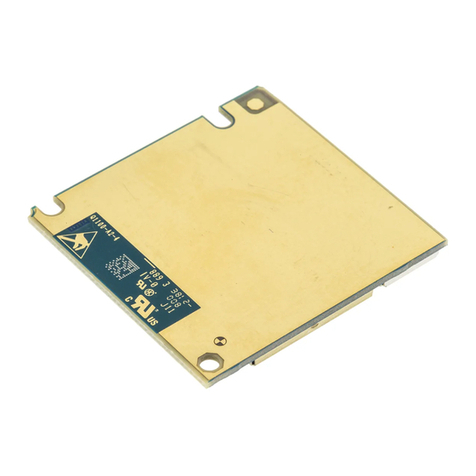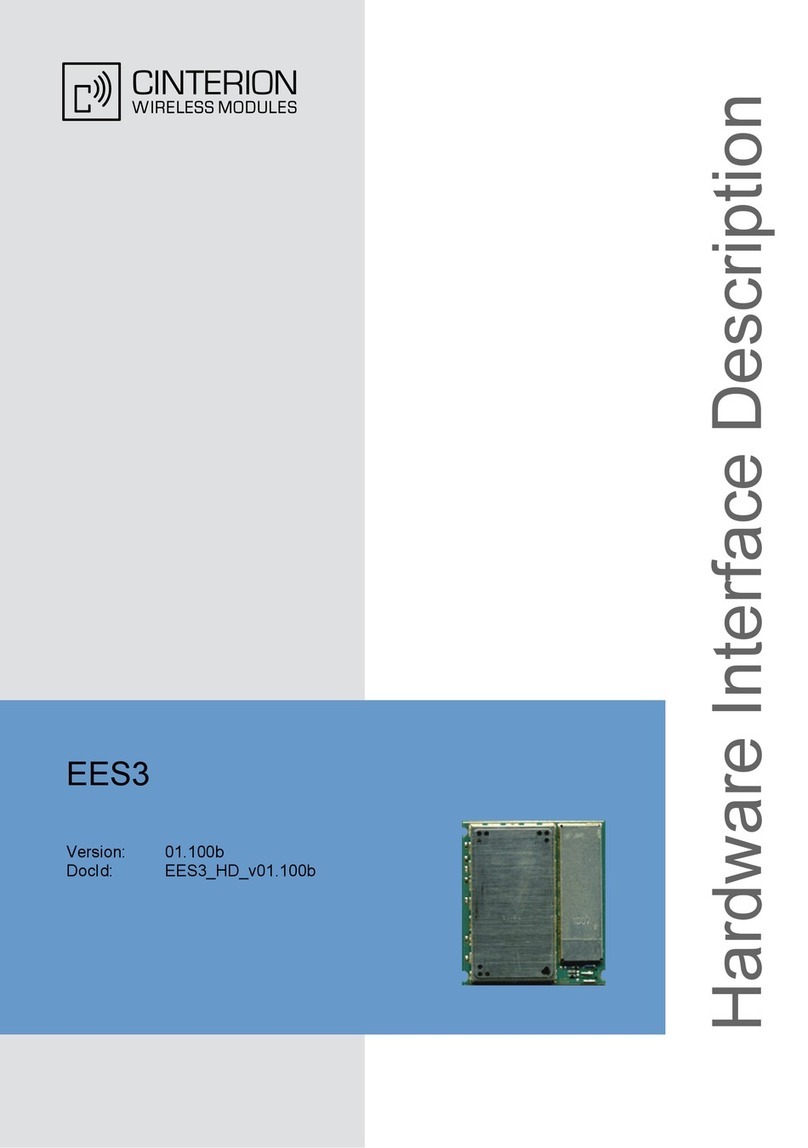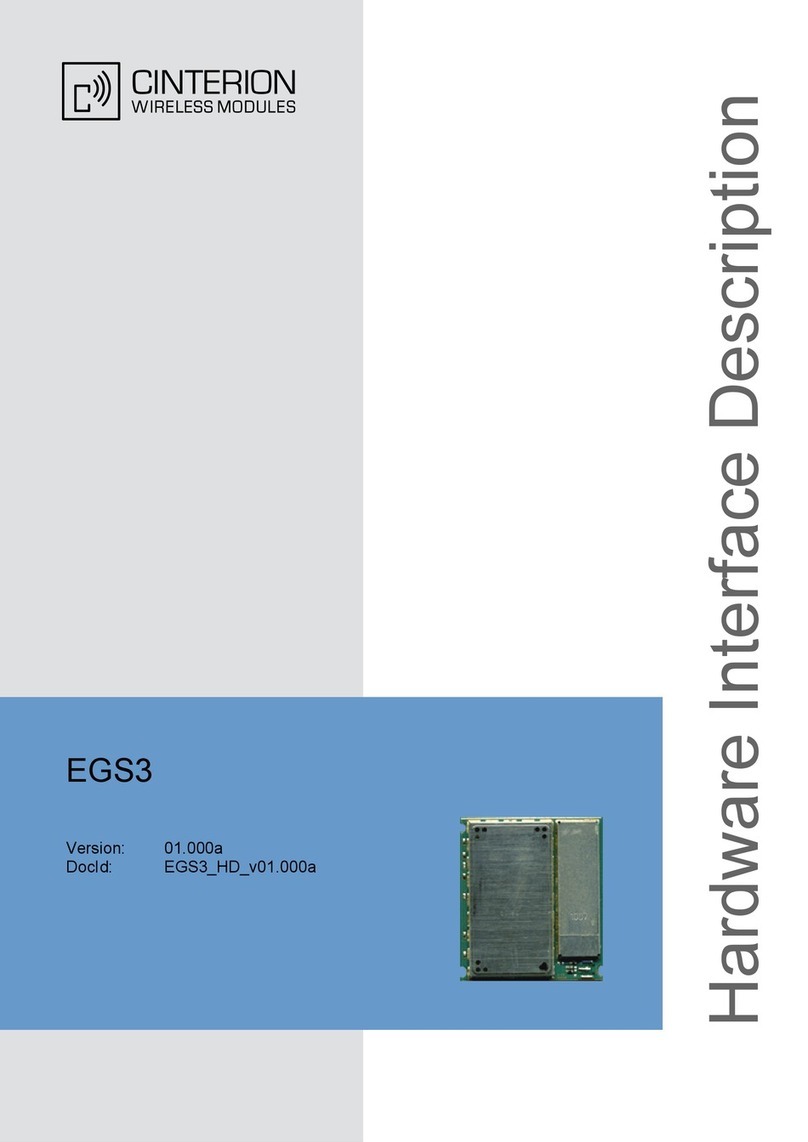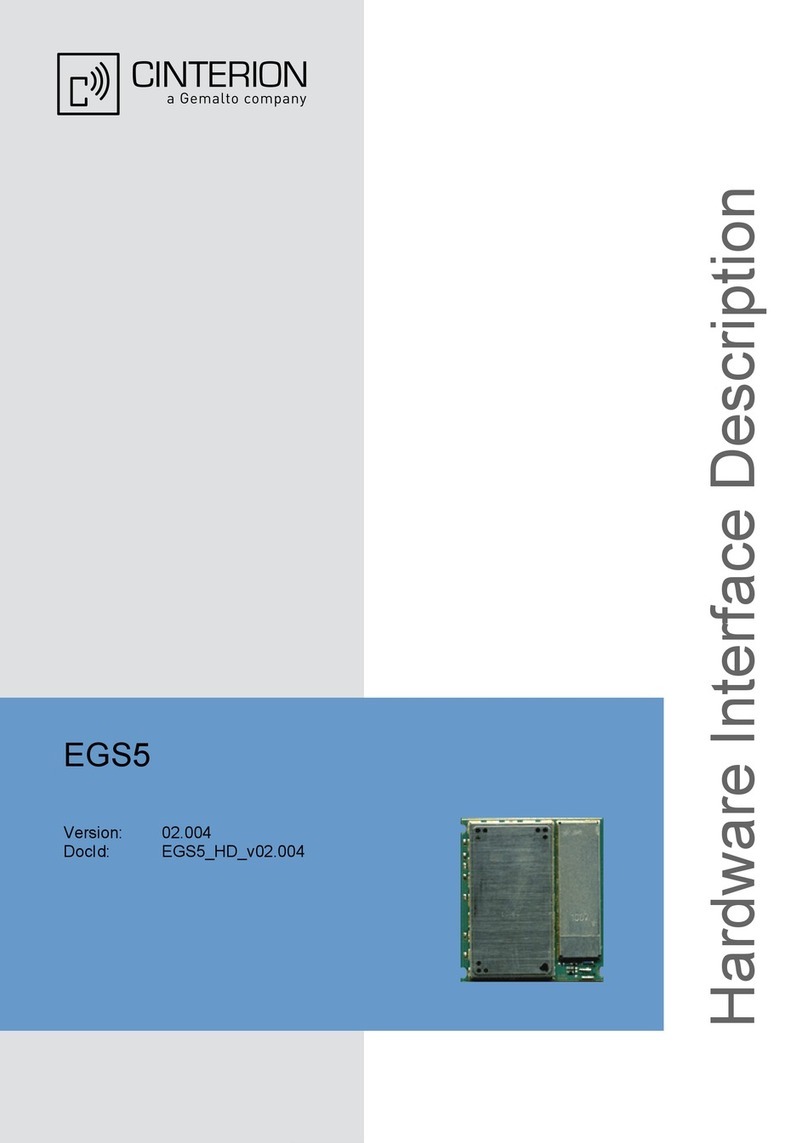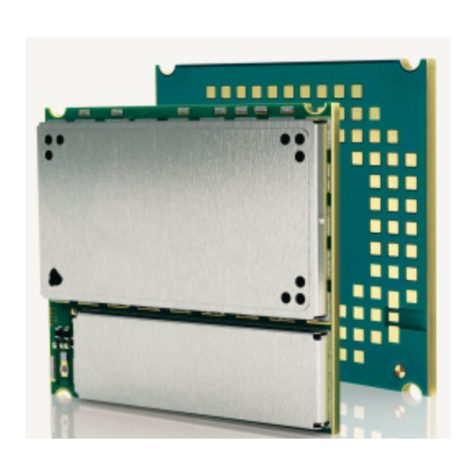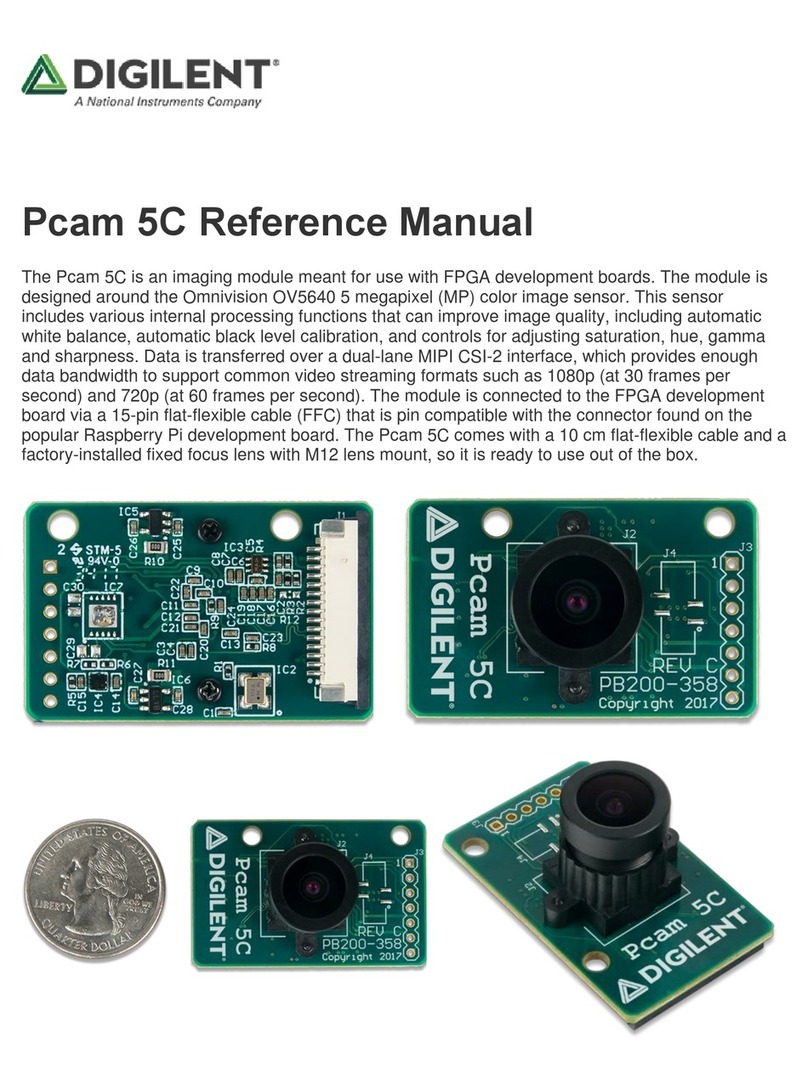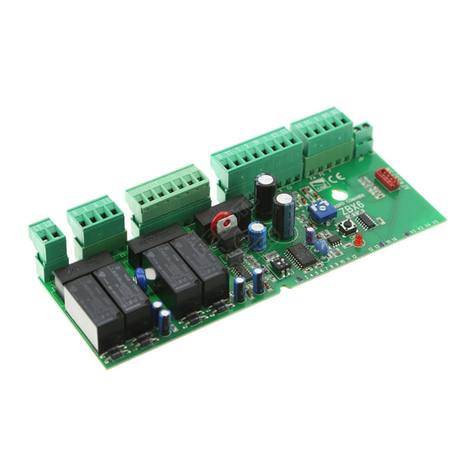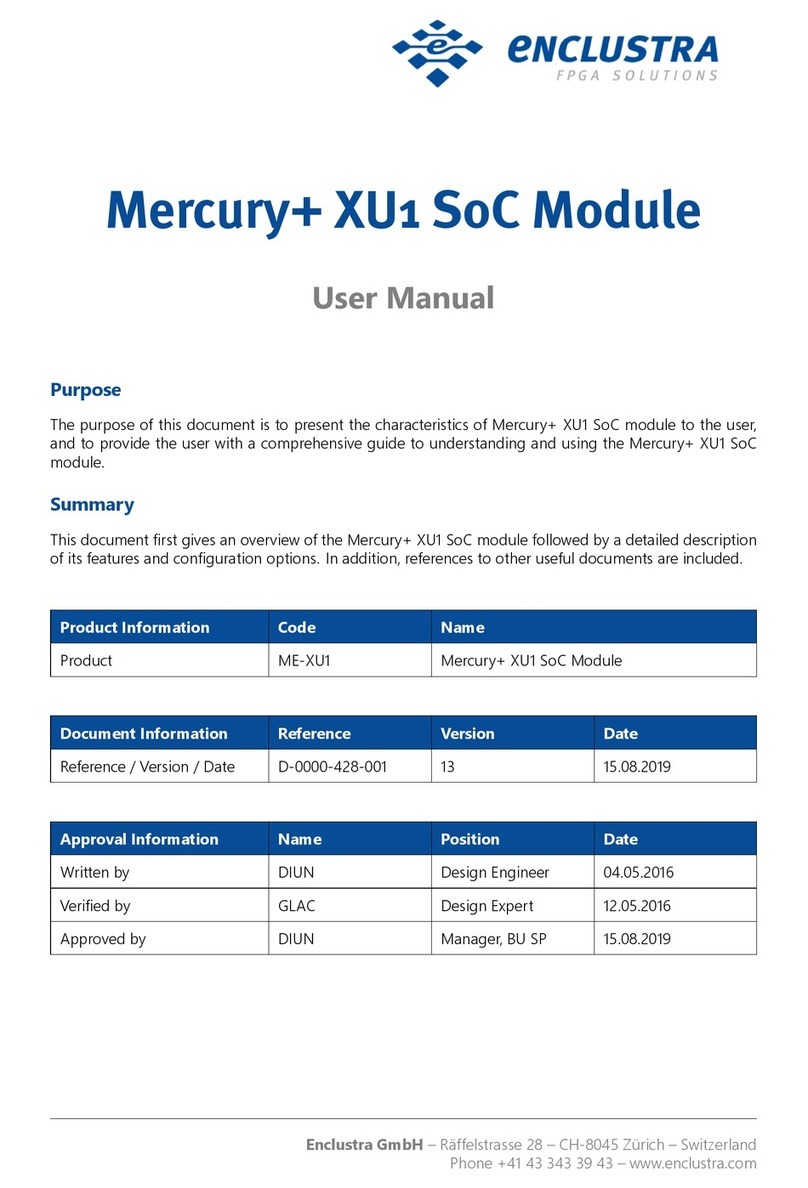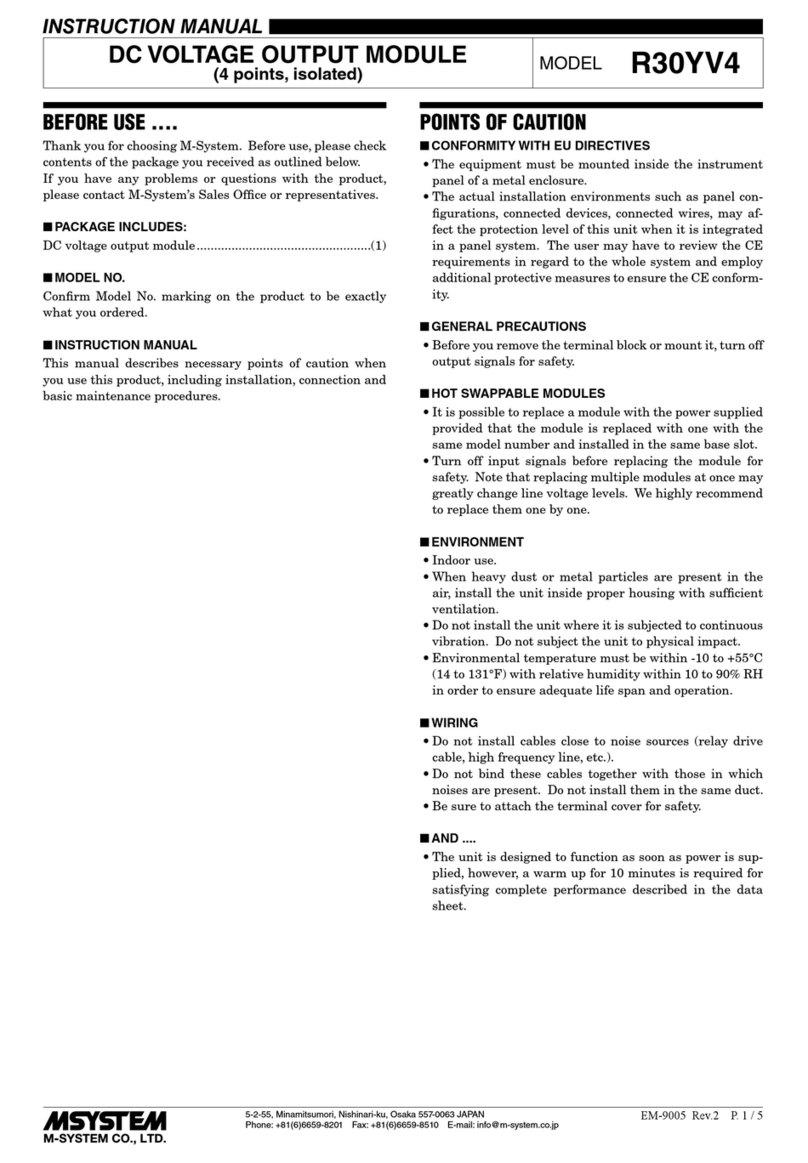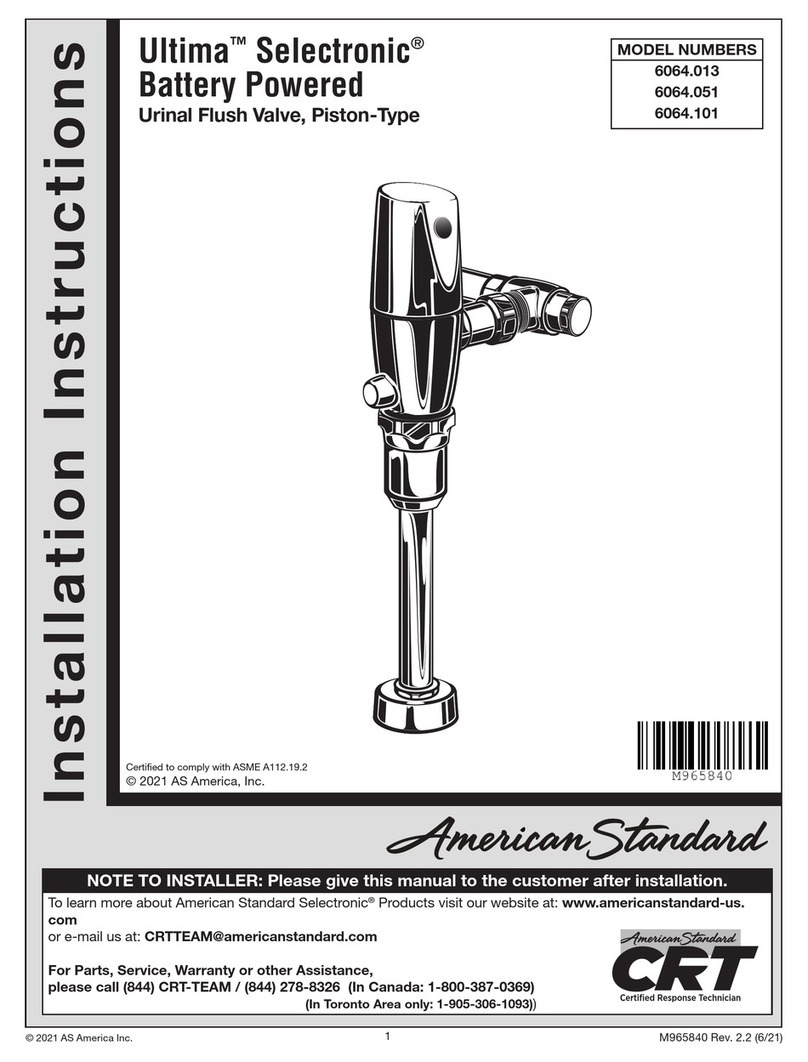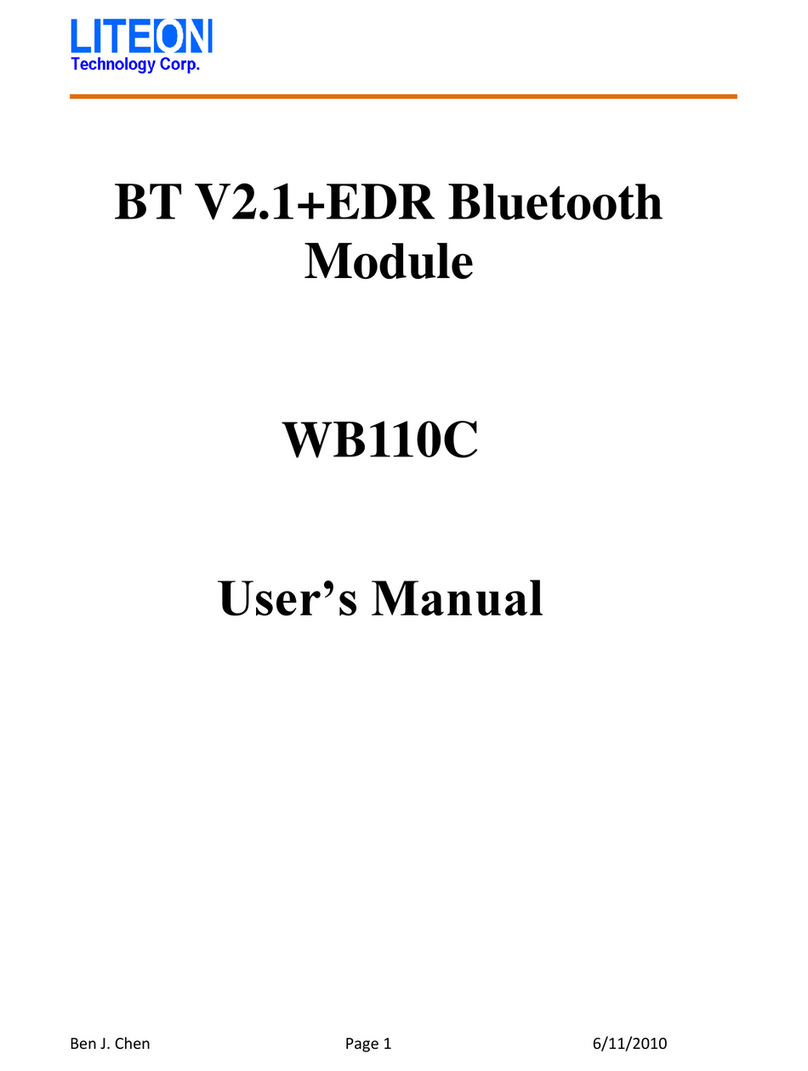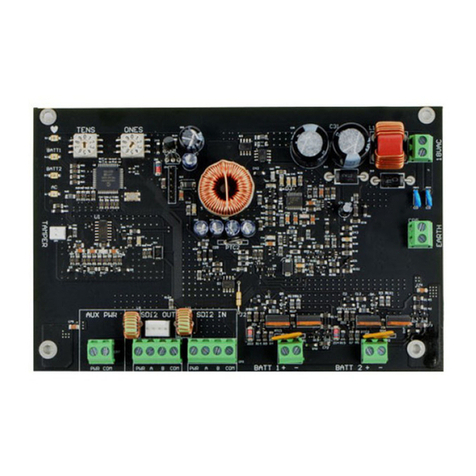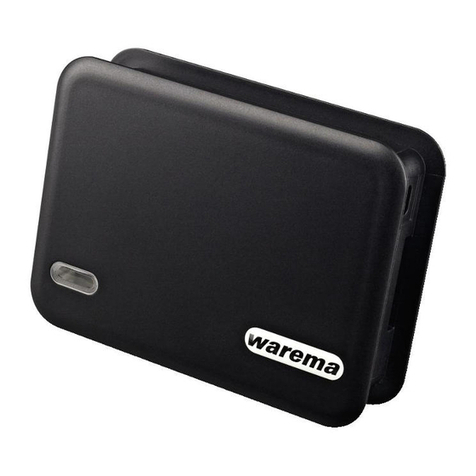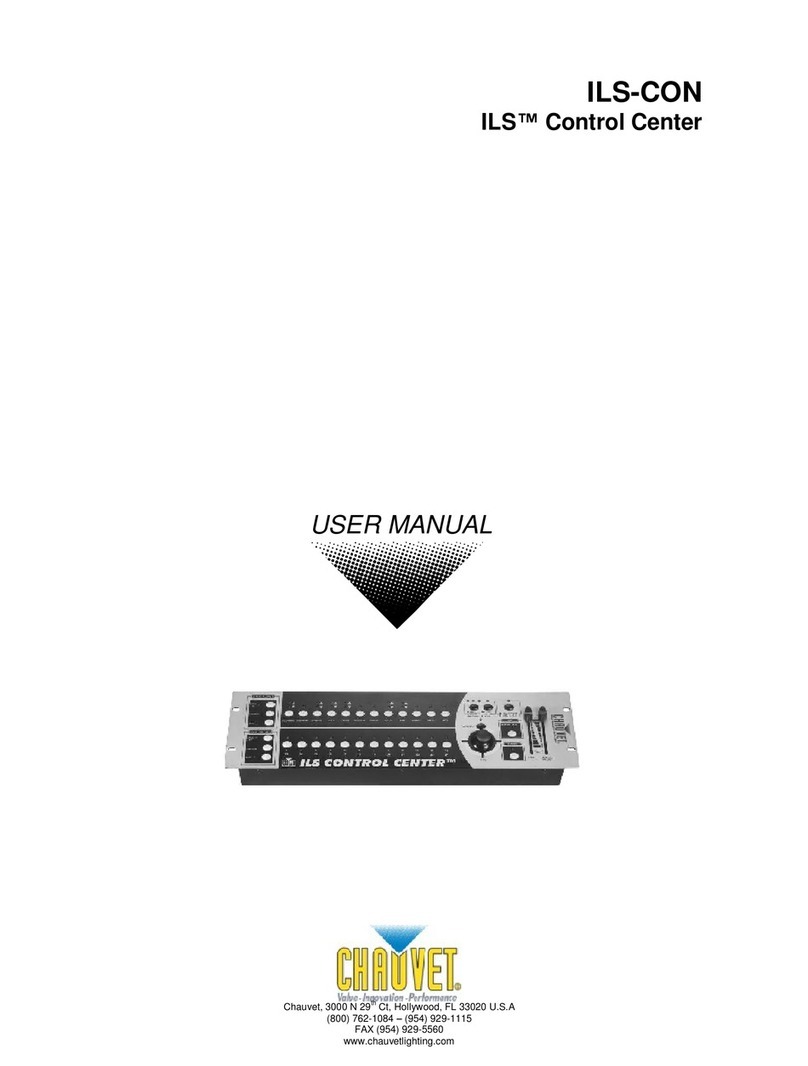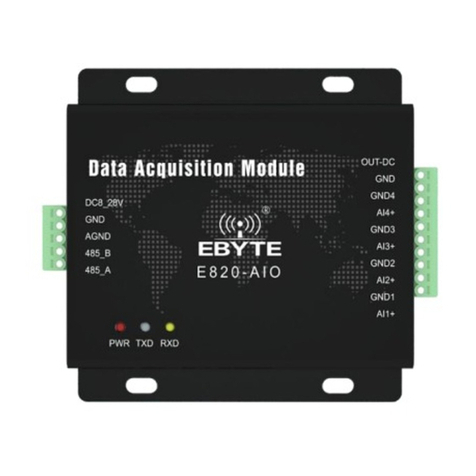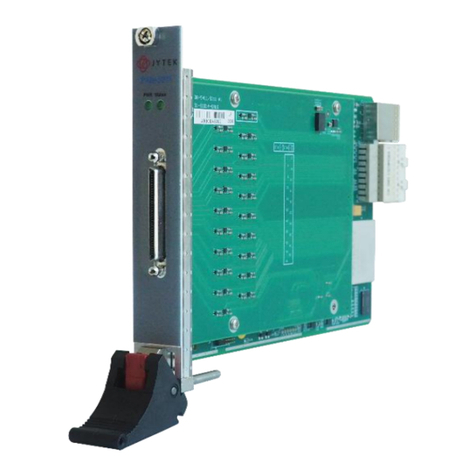Cinterion PVS8 Installation guide

PVS8
Version: 03.000a
DocId: PVS8_HIO_v03.000a
Hardware Interface Overview

GENERAL NOTE
THE USE OF THE PRODUCT INCLUDING THE SOFTWARE AND DOCUMENTATION (THE "PROD-
UCT") IS SUBJECT TO THE RELEASE NOTE PROVIDED TOGETHER WITH PRODUCT. IN ANY
EVENT THE PROVISIONS OF THE RELEASE NOTE SHALL PREVAIL. THIS DOCUMENT CON-
TAINS INFORMATION ON CINTERION PRODUCTS. THE SPECIFICATIONS IN THIS DOCUMENT
ARE SUBJECT TO CHANGE AT CINTERION'S DISCRETION. CINTERION WIRELESS MODULES
GMBH GRANTS A NON-EXCLUSIVE RIGHT TO USE THE PRODUCT. THE RECIPIENT SHALL NOT
TRANSFER, COPY, MODIFY, TRANSLATE, REVERSE ENGINEER, CREATE DERIVATIVE WORKS;
DISASSEMBLE OR DECOMPILE THE PRODUCT OR OTHERWISE USE THE PRODUCT EXCEPT
AS SPECIFICALLY AUTHORIZED. THE PRODUCT AND THIS DOCUMENT ARE PROVIDED ON AN
"AS IS" BASIS ONLY AND MAY CONTAIN DEFICIENCIES OR INADEQUACIES. TO THE MAXIMUM
EXTENT PERMITTED BY APPLICABLE LAW, CINTERION WIRELESS MODULES GMBH DIS-
CLAIMS ALL WARRANTIES AND LIABILITIES. THE RECIPIENT UNDERTAKES FOR AN UNLIMITED
PERIOD OF TIME TO OBSERVE SECRECY REGARDING ANY INFORMATION AND DATA PRO-
VIDED TO HIM IN THE CONTEXT OF THE DELIVERY OF THE PRODUCT. THIS GENERAL NOTE
SHALL BE GOVERNED AND CONSTRUED ACCORDING TO GERMAN LAW.
Copyright
Transmittal, reproduction, dissemination and/or editing of this document as well as utilization of its con-
tents and communication thereof to others without express authorization are prohibited. Offenders will
be held liable for payment of damages. All rights created by patent grant or registration of a utility model
or design patent are reserved.
Copyright © 2013, Cinterion Wireless Modules GmbH
Trademark Notice
Microsoft and Windows are either registered trademarks or trademarks of Microsoft Corporation in the
United States and/or other countries. CDMA2000 is a registered certification mark of the Telecommuni-
cations Industry Association. All other registered trademarks or trademarks mentioned in this document
are property of their respective owners.
PVS8_HIO_v03.000a Page 2 of 37 2013-04-08
Confidential / Preliminary
PVS8 Hardware Interface Overview
2
Document Name: PVS8 Hardware Interface Overview
Version: 03.000a
Date: 2013-04-08
DocId: PVS8_HIO_v03.000a
Status Confidential / Preliminary

PVS8 Hardware Interface Overview
Contents
37
PVS8_HIO_v03.000a Page 3 of 37 2013-04-08
Confidential / Preliminary
Contents
0 Document History.......................................................................................................6
1 Introduction.................................................................................................................7
1.1 Related Documents ...........................................................................................7
1.2 Terms and Abbreviations...................................................................................7
1.3 Regulatory and Type Approval Information .....................................................10
1.3.1 Directives and Standards....................................................................10
1.3.2 SAR requirements specific to portable mobiles..................................12
1.3.3 SELV Requirements ...........................................................................13
1.3.4 Safety Precautions..............................................................................13
2 Product Concept.......................................................................................................15
2.1 Key Features at a Glance................................................................................15
2.2 PVS8 System Overview...................................................................................17
3 Application Interface.................................................................................................18
3.1 Operating Modes .............................................................................................19
3.2 Power Supply...................................................................................................20
3.3 USB Interface...................................................................................................21
3.4 Serial Interface ASC0 ......................................................................................22
3.5 Analog Audio Interface.....................................................................................24
3.6 Digital Audio Interface......................................................................................24
4 GNSS Receiver..........................................................................................................25
5 Antenna Interfaces....................................................................................................26
5.1 CDMA Antenna Interface.................................................................................26
5.1.1 Antenna Installation ............................................................................27
5.2 GNSS Antenna Interface .................................................................................28
6 Mechanics, Mounting and Packaging.....................................................................30
6.1 Mechanical Dimensions of PVS8.....................................................................30
7 Sample Application...................................................................................................32
8 Reference Approval..................................................................................................34
8.1 Reference Equipment for Type Approval.........................................................34
8.2 Compliance with FCC and IC Rules and Regulations .....................................35
9 Appendix....................................................................................................................36
9.1 List of Parts and Accessories...........................................................................36

PVS8 Hardware Interface Overview
Tables
37
PVS8_HIO_v03.000a Page 4 of 37 2013-04-08
Confidential / Preliminary
Tables
Table 1: Directives ....................................................................................................... 10
Table 2: Standards of North American type approval.................................................. 10
Table 3: Requirements of quality ................................................................................. 10
Table 4: Standards of the Ministry of Information Industry of the
People’s Republic of China............................................................................ 11
Table 5: Toxic or hazardous substances or elements with defined concentration
limits............................................................................................................... 11
Table 6: Overview of operating modes ........................................................................ 19
Table 7: DCE-DTE wiring of ASC0 .............................................................................. 23
Table 8: Return loss in the active band........................................................................ 26
Table 9: List of parts and accessories.......................................................................... 36
Table 10: Molex sales contacts (subject to change)...................................................... 37
Table 11: Hirose sales contacts (subject to change)..................................................... 37

PVS8 Hardware Interface Overview
Figures
37
PVS8_HIO_v03.000a Page 5 of 37 2013-04-08
Confidential / Preliminary
Figures
Figure 1: PVS8 system overview .................................................................................. 17
Figure 2: Decoupling capacitor(s) for BATT+................................................................ 20
Figure 3: USB circuit ..................................................................................................... 21
Figure 4: Serial interface ASC0..................................................................................... 22
Figure 5: Supply voltage for active GNSS antenna....................................................... 28
Figure 6: ESD protection for passive GNSS antenna................................................... 29
Figure 7: PVS8 – top and bottomview........................................................................... 30
Figure 8: Dimensions of PVS8 (all dimensions in mm)................................................. 31
Figure 9: PVS8 sample application............................................................................... 33
Figure 10: Reference equipment for type approval......................................................... 34

PVS8 Hardware Interface Overview
0 Document History
6
PVS8_HIO_v03.000a Page 6 of 37 2013-04-08
Confidential / Preliminary
0 Document History
Preceding document: "PVS8 Hardware Interface Description" Version 03.000
New document: "PVS8 Hardware Interface Description" Version 03.000a
New document: "PVS8 Hardware Interface Description" Version 00.001
Chapter What is new
8.2 Revised antenna gain limit for 850 MHz band.
9.1 Added module label number.
Chapter What is new
-- Initial document setup.

PVS8 Hardware Interface Overview
1 Introduction
14
PVS8_HIO_v03.000a Page 7 of 37 2013-04-08
Confidential / Preliminary
1 Introduction
The document1describes the hardware of the PVS8 module, designed to connect to a cellular
device application and the air interface. It helps you quickly retrieve interface specifications,
electrical and mechanical details and information on the requirements to be considered for in-
tegrating further components.
1.1 Related Documents
[1] PVS8 AT Command Set
[2] PVS8 Release Notes
[3] DSB75 Support Box - Evaluation Kit for Cinterion Wireless Modules
[4] Application Note 48: SMT Module Integration
[5] Universal Serial Bus Specification Revision 2.0, April 27, 2000
1.2 Terms and Abbreviations
1. The document is effective only if listed in the appropriate Release Notes as part of the technical
documentation delivered with your Cinterion Wireless Modules product.
Abbreviation Description
AGPS Assisted GPS
ANSI American National Standards Institute
AMR Adaptive Multirate
ARP Antenna Reference Point
BB Baseband
BC Band Class
BEP Bit Error Probability
BTS Base Transceiver Station
CB or CBM Cell Broadcast Message
CDMA Code Division Multiple Access
CE Conformité Européene (European Conformity)
CS Coding Scheme
CS Circuit Switched
CSD Circuit Switched Data
CTM Cellular Text Modem
DAC Digital-to-Analog Converter
DCS Digital Cellular System
DL Download
DRX Discontinuous Reception
DSB Development Support Board

PVS8 Hardware Interface Overview
1.2 Terms and Abbreviations
14
PVS8_HIO_v03.000a Page 8 of 37 2013-04-08
Confidential / Preliminary
DSP Digital Signal Processor
DTMF Dual Tone Multi Frequency
DTX Discontinuous Transmission
EFR Enhanced Full Rate
EMC Electromagnetic Compatibility
ERP Effective Radiated Power
ESD Electrostatic Discharge
ETSI European Telecommunications Standards Institute
EVRC Enhanced Variable Rate Codec
FCC Federal Communications Commission (U.S.)
FDD Frequency Division Duplex
FDMA Frequency Division Multiple Access
FL Forward Link
FR Full Rate
GLONASS Globalnaja Nawigazionnaja Sputnikowaja Sistema
GNSS Global Navigation Satellite System
GPS Global Positioning System
HiZ High Impedance
HR Half Rate
I/O Input/Output
IF Intermediate Frequency
IMEI International Mobile Equipment Identity
ISO International Standards Organization
ITU International Telecommunications Union
kbps kbits per second
LED Light Emitting Diode
LGA Land Grid Array
MBB Moisture barrier bag
Mbps Mbits per second
MCS Modulation and Coding Scheme
MO Mobile Originated
MS Mobile Station, also referred to as TE
MSL Moisture Sensitivity Level
MT Mobile Terminated
NB Narrow Band
NMEA National Marine Electronics Association
Abbreviation Description

PVS8 Hardware Interface Overview
1.2 Terms and Abbreviations
14
PVS8_HIO_v03.000a Page 9 of 37 2013-04-08
Confidential / Preliminary
NTC Negative Temperature Coefficient
PBCCH Packet Switched Broadcast Control Channel
PCB Printed Circuit Board
PCL Power Control Level
PCM Pulse Code Modulation
PCS Personal Communication System, also referred to as GSM 1900
PD Pull Down resistor (appr. 100k)
PDU Protocol Data Unit
PS Packet Switched
PU Pull Up resistor (appr. 100k)
QAM Quadrature Amplitude Modulation
RF Radio Frequency
RL Reverse Link
ROPR Radio Output Power Reduction
RTC Real Time Clock
Rx Receive Direction
SAR Specific Absorption Rate
SCI Slot Cycle Index
SELV Safety Extra Low Voltage
SLIC Subscriber Line Interface Circuit
SMPL Sudden Momentary Power Loss
SMD Surface Mount Device
SMS Short Message Service
SMT Surface Mount Technology
SNR Signal-to-Noise Ratio
SRAM Static Random Access Memory
SRB Signalling Radio Bearer
SUPL Secure User Plane Location
TDMA Time Division Multiple Access
TE Terminal Equipment
TPC Transmit Power Control
TTFF Time To First Fix
Tx Transmit Direction
UL Upload
URC Unsolicited Result Code
USB Universal Serial Bus
Abbreviation Description

PVS8 Hardware Interface Overview
1.3 Regulatory and Type Approval Information
14
PVS8_HIO_v03.000a Page 10 of 37 2013-04-08
Confidential / Preliminary
1.3 Regulatory and Type Approval Information
1.3.1 Directives and Standards
PVS8 has been designed to comply with the directives and standards listed below.
It is the responsibility of the application manufacturer to ensure compliance of the final product
with all provisions of the applicable directives and standards as well as with the technical spec-
ifications provided in the "PVS8 Hardware Interface Description".1
1. Manufacturers of applications which can be used in the US shall ensure that their applications have a
PTCRB approval. For this purpose they can refer to the PTCRB approval of the respective module.
Table 1: Directives
2002/95/EC Directive of the European Parliament and of the Council of
27 January 2003 on therestriction of the use of certain haz-
ardous substances in electrical and electronic equipment
(RoHS)
Table 2: Standards of North American type approval
CFR Title 47 Code of Federal Regulations, Part 22, Part 24 and Part 27; US Equipment
Authorization FCC
OET Bulletin 65
(Edition 97-01) Evaluating Compliance with FCC Guidelines for Human Exposure to Radio-
frequency Electromagnetic Fields
UL 60 950-1 Product Safety Certification (Safety requirements)
NAPRD.03 V5.11 Overview of PCS Type certification review board Mobile Equipment Type
Certification and IMEI control
PCS Type Certification Review board (PTCRB)
RSS132, RSS133,
RSS139 Canadian Standard
Table 3: Requirements of quality
IEC 60068 Environmental testing
DIN EN 60529 IP codes

PVS8 Hardware Interface Overview
1.3 Regulatory and Type Approval Information
14
PVS8_HIO_v03.000a Page 11 of 37 2013-04-08
Confidential / Preliminary
Table 5: Toxic or hazardous substances or elements with defined concentration limits
Table 4: Standards of the Ministry of Information Industry of the People’s Republic of China
SJ/T 11363-2006 “Requirements for Concentration Limits for Certain Hazardous Substances
in Electronic Information Products” (2006-06).
SJ/T 11364-2006 “Marking for Control of Pollution Caused by Electronic
Information Products” (2006-06).
Accordingtothe“ChineseAdministrationonthe Controlof
Pollution caused by Electronic Information Products”
(ACPEIP) the EPUP, i.e., Environmental Protection Use
Period, of this product is 20 years as per the symbol
shown here, unless otherwise marked. The EPUP is valid only as long as
the product is operated within the operating limits described in the Cinterion
Hardware Interface Description.
Please see Table 5 for an overview of toxic or hazardous substances or ele-
ments that might be contained in product parts in concentrations above the
limits defined by SJ/T 11363-2006.

PVS8 Hardware Interface Overview
1.3 Regulatory and Type Approval Information
14
PVS8_HIO_v03.000a Page 12 of 37 2013-04-08
Confidential / Preliminary
1.3.2 SAR requirements specific to portable mobiles
Mobile phones, PDAs or other portable transmitters and receivers incorporating a CDMA mod-
ule must be in accordance with the guidelines for human exposure to radio frequency energy.
This requires the Specific Absorption Rate (SAR) of portable PVS8 based applications to be
evaluated and approved for compliance with national and/or international regulations.
Since the SAR value varies significantly with the individual product design manufacturers are
advised to submit their product for approval if designed for portable use. For USmarkets the
relevant directives are mentioned below. It is the responsibility of the manufacturer of the final
product to verify whether or not further standards, recommendations or directives are in force
outside these areas.
Products intended for sale on US markets
ES 59005/ANSI C95.1 Considerations for evaluation of human exposure to electromagnetic
fields (EMFs) from mobile telecommunication equipment (MTE) in the
frequency range 30MHz - 6GHz
IMPORTANT:
Manufacturers of portable applications based on PVS8 modules are required to havetheir final
product certified and apply for their own FCC Grant and Industry Canada Certificate related to
the specific portable mobile.

PVS8 Hardware Interface Overview
1.3 Regulatory and Type Approval Information
14
PVS8_HIO_v03.000a Page 13 of 37 2013-04-08
Confidential / Preliminary
1.3.3 SELV Requirements
The power supply connected to the PVS8 module shall be in compliance with the SELV re-
quirements defined in EN 60950-1.
1.3.4 Safety Precautions
The following safety precautions must be observed during all phases of the operation, usage,
service or repair of any cellular terminal or mobile incorporating PVS8. Manufacturers of the
cellular terminal are advised to convey the following safety information to users and operating
personnel and to incorporate these guidelines into all manuals supplied with the product. Fail-
ure to comply with these precautions violates safety standards of design, manufacture and in-
tended use of the product. Cinterion Wireless Modules assumes no liability for customer’s
failure to comply with these precautions.
When in a hospital or other health care facility, observe the restrictions on the use of
mobiles. Switch the cellular terminal or mobile off, if instructed to do so by the guide-
lines posted in sensitive areas. Medical equipment may be sensitive to RF energy.
Theoperationofcardiacpacemakers,otherimplantedmedicalequipmentandhearing
aids can be affected by interference from cellular terminals or mobiles placed close to
the device. If in doubt about potential danger, contact the physician or the manufac-
turer of the device to verify that the equipment is properly shielded. Pacemaker
patients are advised to keep their hand-held mobile away from the pacemaker, while
it is on.
Switch off the cellular terminal or mobile before boarding an aircraft. Make sure it can-
not be switched on inadvertently. The operationof wireless appliances in an aircraft is
forbidden to prevent interference with communications systems. Failure to observe
these instructions may lead to the suspension or denial of cellular services to the
offender, legal action, or both.
Do not operate the cellular terminal or mobile in the presence of flammable gases or
fumes. Switch off the cellular terminal when you are near petrol stations, fuel depots,
chemical plants or where blasting operations are in progress. Operation of any electri-
cal equipment in potentially explosive atmospheres can constitute a safety hazard.
Your cellular terminal or mobile receives and transmits radio frequency energy while
switched on. Remember that interference can occur if it is used close to TV sets,
radios, computers orinadequately shielded equipment.Followany special regulations
and always switch off the cellular terminal or mobile wherever forbidden, or when you
suspect that it may cause interference or danger.
Road safety comes first! Do not use a hand-held cellular terminal or mobile when driv-
ing a vehicle, unless it is securely mounted in a holder for speakerphone operation.
Before making a call with a hand-held terminal or mobile, park the vehicle.
Speakerphones must be installed by qualified personnel. Faulty installation or opera-
tion can constitute a safety hazard.

PVS8 Hardware Interface Overview
1.3 Regulatory and Type Approval Information
14
PVS8_HIO_v03.000a Page 14 of 37 2013-04-08
Confidential / Preliminary
IMPORTANT!
Cellular terminals or mobiles operate using radio signals and cellular networks.
Because of this, connection cannot be guaranteed at all times under all conditions.
Therefore, you should never rely solely upon any wireless device for essential com-
munications, for example emergency calls.
Remember, in order to make or receive calls, the cellular terminal or mobile must be
switched on and in a service area with adequate cellular signal strength.
Some networks do not allow for emergency calls if certain network services or phone
features are in use (e.g. lock functions, fixed dialing etc.). You may need to deactivate
those features before you can make an emergency call.
Bear in mind that exposure to excessive levels of noise can cause physical damage
to users! With regard to acoustic shock, the cellular application must be designed to
avoid unintentional increaseof amplification, e.g. for a highly sensitive earpiece. A pro-
tection circuit should be implemented in the cellular application.

PVS8 Hardware Interface Overview
2 Product Concept
17
PVS8_HIO_v03.000a Page 15 of 37 2013-04-08
Confidential / Preliminary
2 Product Concept
2.1 Key Features at a Glance
Feature Implementation
General
Frequency bands CDMA: Triple band (BC0/BC1 and BC10 subclass 2+3), 800/1900MHz
Power supply 3.3V < VBATT+ <4.2V
Operating temperature
(board temperature) Normal operation: -30°C to +85°C
Restricted operation: -40°C to +95°C
Physical Dimensions: 33mm x 29mm x 2mm
Weight: approx. 5g
RoHS All hardware components fully compliant with EU RoHS Directive
CDMA features
3GPP2 CDMA2000 EV-DO Rev.A data rates:
FL max. 3.1Mbps, RL max. 1.8Mbps
1xRTT Advanced data rates:
FL max. 307.2kbps, RL max. 307.2kbps
SMS Point-to-point MT and MO
Cell broadcast
Text and PDU mode
GNSS Features
Protocol NMEA
Modes Standalone GNSS
Assisted GNSS
- Control plane - E911
- User plane - gpsOneXTRA™
General Power saving modes
Software
AT commands Hayes, 3GPP TS 27.007 and 27.005, and proprietary Cinterion Wireless
Modules commands as well as provider specific CDMA commands
Audio Audio speech codecs
3GPP2: EVRC, EVRC-B (4GV-NB), QCELP, AMR-NB
Speakerphoneoperation,echocancellation, noisesuppression,9 ringing
tones, TTY support
Software update Generic firmware update from host application over ASC0 or USB

PVS8 Hardware Interface Overview
2.1 Key Features at a Glance
17
PVS8_HIO_v03.000a Page 16 of 37 2013-04-08
Confidential / Preliminary
Interfaces
Module interface Surface mount device with solderable connection pads (SMT application
interface).
Land grid array (LGA) technology ensures high solder joint reliability and
provides the possibility to use an optional module mounting socket.
For more information on how to integrate SMT modules see also [4]. This
applicationnote compriseschapters on modulemountingandapplication
layout issues as well as on additional SMT application development
equipment.
Antenna 50Ohms.CDMAmainantenna, CDMAdiversityantenna, GNSS antenna
(active/passive)
USB USB 2.0 High Speed (480Mbit/s) device interface, Full Speed (12Mbit/s)
compliant
Serial interface ASC0:
• 8-wire modem interface with status and control lines, unbalanced,
asynchronous
• Adjustable baud rates from 9,600bps up to 921,600bps
• Supports RTS0/CTS0 hardware flow control
• Multiplex ability according to GSM 07.10 Multiplexer Protocol
Status Signal line to indicate network connectivity state
Audio 1 analog interface with microphone feeding
1 digital interface: PCM or I2S
Power on/off, Reset
Power on/off Switch-on by hardware signal IGT
Switch-off by AT command (AT^SMSO)
Automatic switch-off in case of critical temperature or voltage conditions
Reset Orderly shutdown and reset by AT command
Emergency-off Emergency-off by hardware signal EMERG_OFF if IGT is not active
Special Features
Phonebook Phone
TTY/CTM support Integrated CTM modem
Antenna SAIC (Single Antenna Interference Cancellation) / DARP (Downlink
Advanced Receiver Performance)
Rx diversity (receiver type 3i - 16-QAM)
Over-the-air provisioning Verizon specific OTASP (Over-the-Air Service Provisioning) and OTAPA
(Over-the-Air Parameter Administration)
Evaluation kit
Evaluation module PVS8 module soldered onto a dedicated PCB that can be connected to
an adapter in order to be mounted onto the DSB75.
DSB75 DSB75 Development Support Board designed to test and type approve
Cinterion Wireless Modules and provide a sample configuration for appli-
cation engineering. A special adapter is required to connect the PVS8
evaluation module to the DSB75.
Feature Implementation

PVS8 Hardware Interface Overview
2.2 PVS8 System Overview
17
PVS8_HIO_v03.000a Page 17 of 37 2013-04-08
Confidential / Preliminary
2.2 PVS8 System Overview
Figure 1: PVS8 system overview
USB Serial
ASC0 Analog
audio Power
supply RTC IGT,
Emergency Off Net state/
status
Host Application
Controller On/Off
Module
Application
PSU
or
CDMA
diversity antenna
Power for Application
(VEXT)
Power Indication
(PWR_IND)
Modem Interface
Digital
audio
PCM or I2S
Codec
CDMA
GNSS
GNSS antenna
LCI
Low current
indication
CDMA main
antenna
Wake-
up
Host Wakeup
GNSS
active antenna supply,
current limiter
Power
Supply
Application

PVS8 Hardware Interface Overview
3 Application Interface
25
PVS8_HIO_v03.000a Page 18 of 37 2013-04-08
Confidential / Preliminary
3 Application Interface
PVS8 is equipped with an SMT application interface that connects to the external application.
The host interface incorporates several sub-interfaces described in the following sections:
• Operating modes - see Section 3.1
• Power supply - see Section 3.2
• Serial interface USB - see Section 3.3
• Serial interface ASC0 - Section 3.4
• Analog audio interface - see Section 3.5
• Digital audio interface (PCM or I2S) - see Section 3.6

PVS8 Hardware Interface Overview
3.1 Operating Modes
25
PVS8_HIO_v03.000a Page 19 of 37 2013-04-08
Confidential / Preliminary
3.1 Operating Modes
The table below briefly summarizes the various operating modes referred to in the following
chapters.
Table 6: Overview of operating modes
Mode Function
Normal
operation CDMA SLEEP Power saving set automatically when nocall is in progress and the USB
connection is suspended by host or not present and no active commu-
nication via ASC0.
CDMA IDLE Power saving disabled (see [1]:AT^SCFG "MEopMode/
PwrSave",<PwrSaveMode>) or an USB connection not suspended, but
no call in progress.
CDMA TALK/
CDMA DATA CDMA data transfer in progress. Power consumption depends on net-
work settings and data transfer rate.
Power
Down Normal shutdown after sending the AT^SMSO command. Only a voltage regulator is active
for powering the RTC. Software is not active. Interfaces are not accessible. Operating volt-
age (connected to BATT+) remains applied.
Airplane
mode Airplane mode shuts down the radio part of the module, causes the module to log off from
the CDMA network and disables all AT commands whose execution requires a radio con-
nection.
Airplane mode can be controlled by AT command (see [1]).

PVS8 Hardware Interface Overview
3.2 Power Supply
25
PVS8_HIO_v03.000a Page 20 of 37 2013-04-08
Confidential / Preliminary
3.2 Power Supply
PVS8 needs to be connected to a power supply at the SMT application interface - 6 lines each
BATT+ and GND. There are three separate voltage domains for BATT+:
• BATT+_PA1 with 2 lines for the first power amplifier supply
• BATT+_PA2 with 2 lines for the second power amplifier supply
• BATT+ with 2 lines for the general power management.
The main power supply from an external application has to be a single voltage source and has
to be expanded to three sub paths (star structure). Capacitors should be placed as close as
possible to the BATT+ pads. Figure 2 shows two sample circuits (minimum requirement and
recommended alternative) for decoupling capacitors for BATT+.
Figure 2: Decoupling capacitor(s) for BATT+
The power supply of PVS8 must be able to provide the peak current during the uplink transmis-
sion.
All key functions for supplying power to the device are handled by the power management IC.
It provides the following features:
• Stabilizes thesupply voltages for the baseband using switching regulators and low drop lin-
ear voltage regulators.
• Switches the module's power voltages for the power-up and -down procedures.
• Delivers, across the VEXT line, a regulated voltage for an external application. This voltage
is not available in Power-down mode and can be reduced via AT command to save power.
BATT+
BATT+
BATT+_PA1
BATT+_PA2
2
2
2Decoupling capacitor
e.g. 100…220µF
Ultra-low ESR
Module
GND
SMT interface
+
Minimum requirement
BATT+
2
2
2Decoupling capacitors
e.g. 47µF X5R MLCC
3x
GND
BATT+
BATT+_PA1
BATT+_PA2
Module
SMT interface
Recommended alternative
Table of contents
Other Cinterion Control Unit manuals
